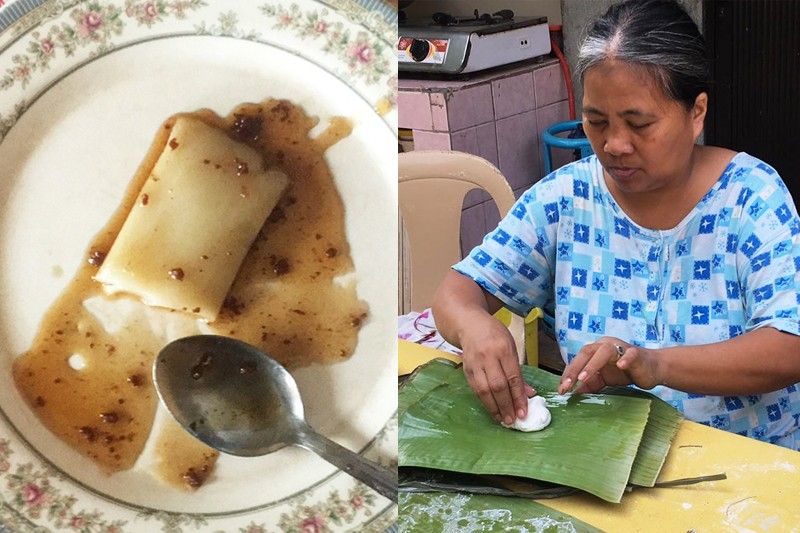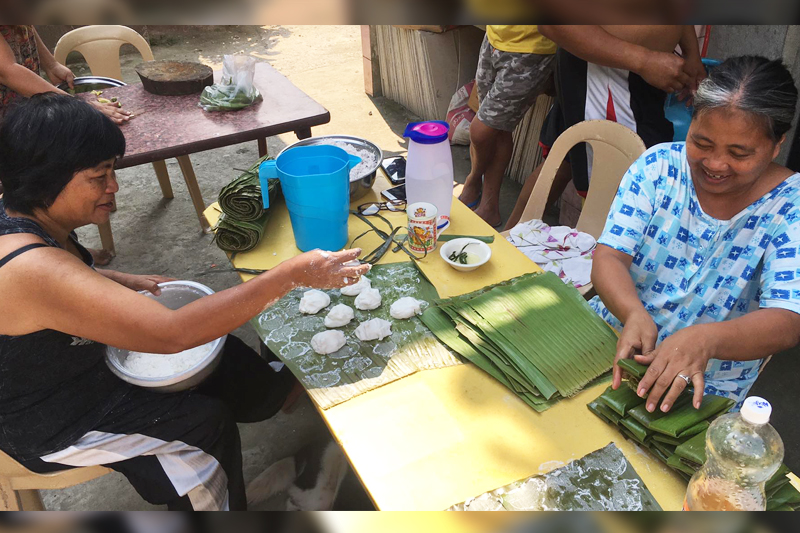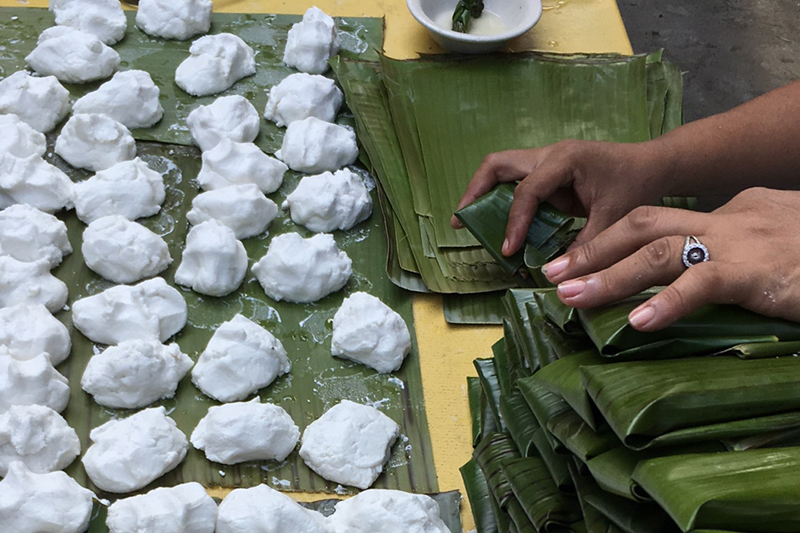More than a rice cake: How Itawits embrace spirituality through ‘Sinipian’

MANILA, Philippines — It is during the Holy Week when Filipino Catholics remember Christ’s passion through different traditions that vary from region to region, like pabasa, senakulo and Moriones.
In Cagayan Valley, the Itawes communitiy has a unique and tasty way of expressing their spirituality during lent—through a rice cake called Sinipian.
Food for the soul

Up in the north, they take the term “food for the soul” quite literally. In this case, the food is nothing else but their main produce as an agricultural land: rice.
Sinipian, also regarded as Binallay by the Ibanags in other portions of Cagayan and Isabela, is a native delicacy in Northern Luzon usually served during Holy Week, specifically Maundy Thursday and Good Friday, when people would fast and eat nothing but this snack.
Similar to suman, the rice cake, or dekat in itawit, is made from glutinous rice steamed in a banana leaf. To complement that dekat is the issi or laro, a sweet syrup made from coconut sugar syrup and curdled coconut cream.
Locals say the rice cake symbolizes the “Body and blood of Christ," the dekat being the body and the issi as the blood. On the other hand, some would also call it “Dila ni Hudas” as a reference to how Jesus Christ’s blood was shed after Judas betrayed him with a kiss.
In an interview with Philstar.com, George Andal, a Master Teacher at Cagayan National High School shared that sinipian is specially cooked and served during the Holy Week as it helps the Itawits observe fasting and abstinence.
“A piece of sinipian would sustain the energy of a person for the whole day. This could be due to the rice starch which serves as the source of energy and the sweet syrup with coconut oil that helps maintain the balance in the stomach,” he said.
A community tradition

In Enrile, Cagayan, preparing sinipian during lent has become a tradition in almost every household. Among those who make them yearly are Carmelita Zingapan and Josefa Aspiras.
Early morning of Good Wednesday, they would meet up at the Aspiras’ residence to start making sinipian. They begin by soaking the glutinous rice in water for four to five hours, then grind the soaked rice into flour. After which, they mix the flour into water and knead the mixture to make a smooth dough.
They carefully place the dough over banana leaves and flatten it. They wrap and tie it in pairs before stocking and steaming it in a pot for at least 30 minutes. Once cooked, the dough is removed from the water and placed in a special container called balulang for air drying so that the sinipian could last for days.
They then proceed to prepare the sweet sauce. There are two ways in doing this, they can either make it from cooking pure sugarcane or simply boil the coconut milk until it becomes oil. They then mix it with molasses until the desired thickness is obtained.
Once both the rice cake and the sauce are prepared, the sinipian is ready to be served by removing it from the wrap and dipping it in the syrup.
Spirituality in food

According to locals, they make it to a point that they don’t miss making these rice cakes during Holy Week as eating this during holy week could mean blessings from the Lord and protection from any evil.
George Andal explains this spiritual connection between sinipian and the Cagayanos. “Looking into its theological essence, the Itawits could have patterned it from the bible when the Israelites ate unleavened bread in haste during the Passover feast. The sinipian, originally, is made up of rice starch alone without adding any ingredients, and can be eaten even when in haste,” he said.
“During the last supper, Jesus himself took unleavened bread and used it to perpetuate his presence. The Itawits in their own knowledge thought of sinipian to perpetuate the action of Jesus in the breaking of bread,” he added.
Even if there's a pandemic at hand, nothing can stop the Itawits and Ibanags from their cultural traditions and practices to commemorate the passion of Christ. As Andal mentions, all the adversities we’re facing should give us the more reason to value the connection of food and spirituality.
“COVID-19 may have affected religious gatherings but not the preparation of the sinipian. It remains a reminder among Catholics of the passion, death and resurrection of Jesus.” Andal said.
“Despite the pandemic, this staple is still served on the Ibanag and Itawes tables. It is not only because we learned this long before from our ancestors but also because of its deep religious significance. The sinipian can never be tasty when not dipped with the syrup—same as how Cagayanos can never be called brave unless dipped and tested with great challenges in life,” he concluded.
Editor’s Note: The article has been revised to refer to Itawits, a different ethnolinguistic group from the Ibanags in Cagayan.



















